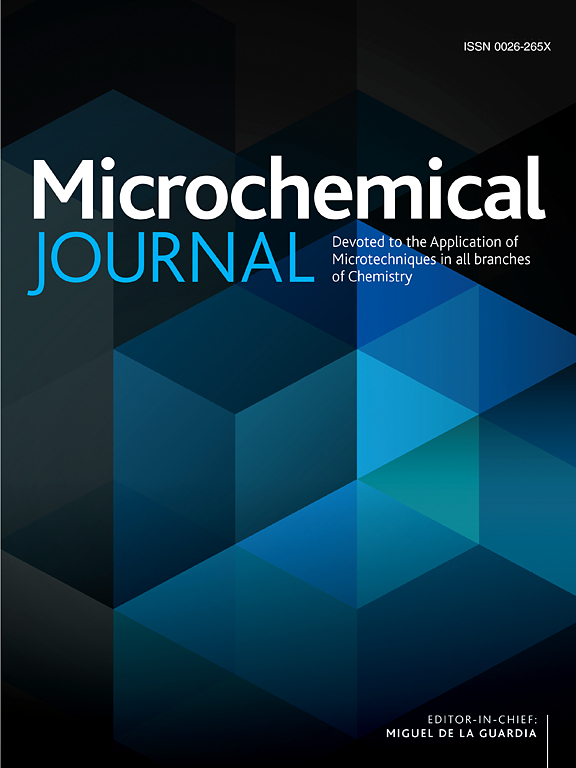Ag/MnO/GCE electrode for accurate and rapid ammonium ion detection
IF 4.9
2区 化学
Q1 CHEMISTRY, ANALYTICAL
引用次数: 0
Abstract
Ammonia nitrogen mainly comes from industrial wastewater and aquaculture water bodies, and the construction of a rapid and accurate detection method is of great significance for assessing and monitoring the pollution status of water bodies and the risk of eutrophication. In this study, an Ag/MnO/ Glassy carbon electrode (GCE) electrochemical sensor was constructed by the pulsed deposition method, which can rapidly, accurately and sensitively detect ammonia nitrogen at low concentration under neutral environment. MnO, as the main catalyst, can generate H2O2 to oxidise ammonia nitrogen, thus achieving sensitive detection of ammonia nitrogen. Meanwhile, Ag can significantly improve the sensitivity and stability of the sensor. The Ag/MnO/GCE sensor showed a linear range of 0.05–150 μM for the detection of ammonia nitrogen, with a detection limit of 0.015 μM, a sensitivity of 195.50 μA mM−1 cm−2, and ideal recoveries for the detection of actual samples (93.60 %–101.26 %). The sensor exhibited fast response, good stability and selectivity, and little interference from common ions in water, which offers a workable strategy for the accurate and rapid detection of ammonia nitrogen in water.

用于准确快速检测铵离子的 Ag/MnO/GCE 电极
本文章由计算机程序翻译,如有差异,请以英文原文为准。
求助全文
约1分钟内获得全文
求助全文
来源期刊

Microchemical Journal
化学-分析化学
CiteScore
8.70
自引率
8.30%
发文量
1131
审稿时长
1.9 months
期刊介绍:
The Microchemical Journal is a peer reviewed journal devoted to all aspects and phases of analytical chemistry and chemical analysis. The Microchemical Journal publishes articles which are at the forefront of modern analytical chemistry and cover innovations in the techniques to the finest possible limits. This includes fundamental aspects, instrumentation, new developments, innovative and novel methods and applications including environmental and clinical field.
Traditional classical analytical methods such as spectrophotometry and titrimetry as well as established instrumentation methods such as flame and graphite furnace atomic absorption spectrometry, gas chromatography, and modified glassy or carbon electrode electrochemical methods will be considered, provided they show significant improvements and novelty compared to the established methods.
 求助内容:
求助内容: 应助结果提醒方式:
应助结果提醒方式:


